I’ve been playing around with ‘O’ Group. I ordered it when released, but hadn’t put it on the table until recently. For those who aren’t familiar with it, it’s a WWII Battalion-level ruleset from Reisswitz Press, distributed by the TooFatLardies (and now Karwansaray in the Netherlands; stupid Brexit). I’ve loads of 15mm models that were based as squads for Flames of War. These are perfect for ‘O’ Group, which scales things up a bit with each base representing a section in a platoon. I’ve plenty of terrain, certainly for Western Europe theatre games, so for me the cost of ‘getting into’ ‘O’ Group is pretty low. I read the rules a couple of times when I got it and while there are some issues with rules being presented in a piecemeal fashion (e.g. Panzergrenadiers have some special rules and these are somewhat distributed in the book), for the most part, they’re quite quite well written and straightforward to understand. The good news is they become even clearer on playing the game!
My process for learning the game was:
- Read the rules
- Play an infantry only game with a worn Battalion (just 2 companies) on each side
- Read the rules again!
Here are some photos from that first game.



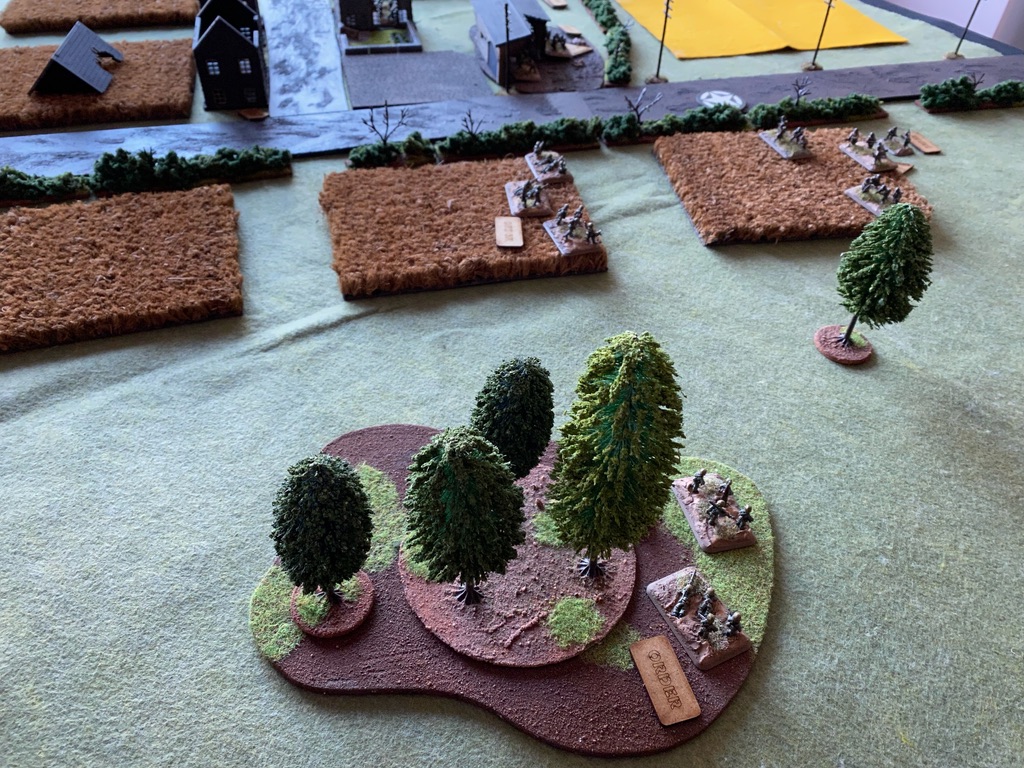


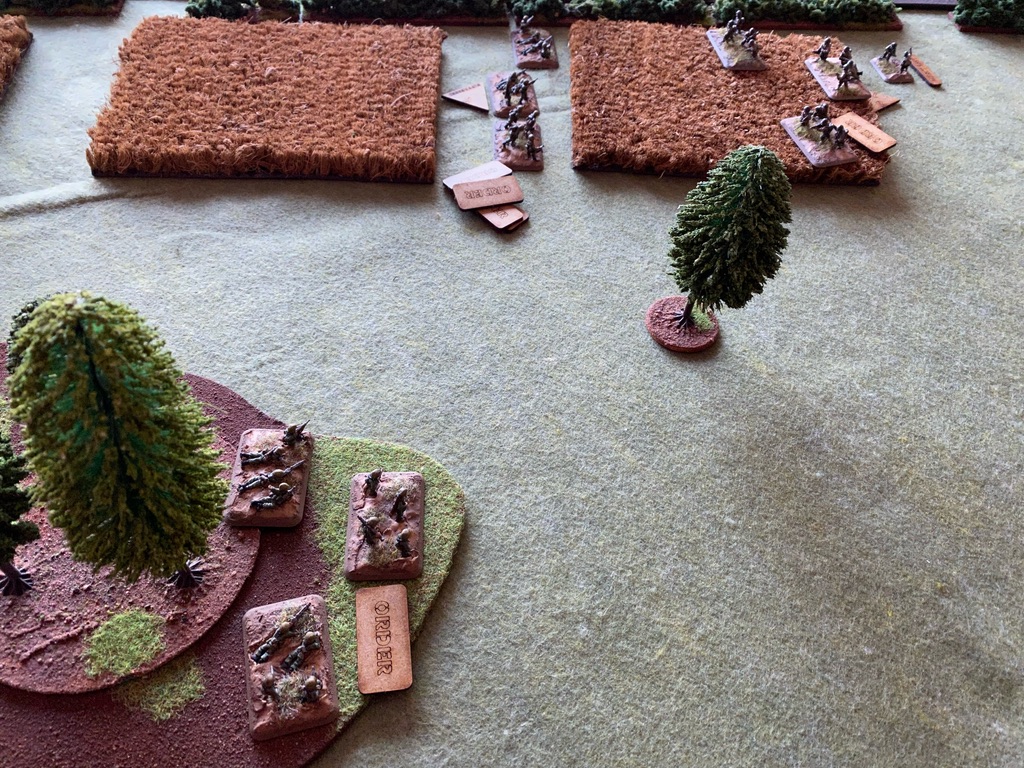

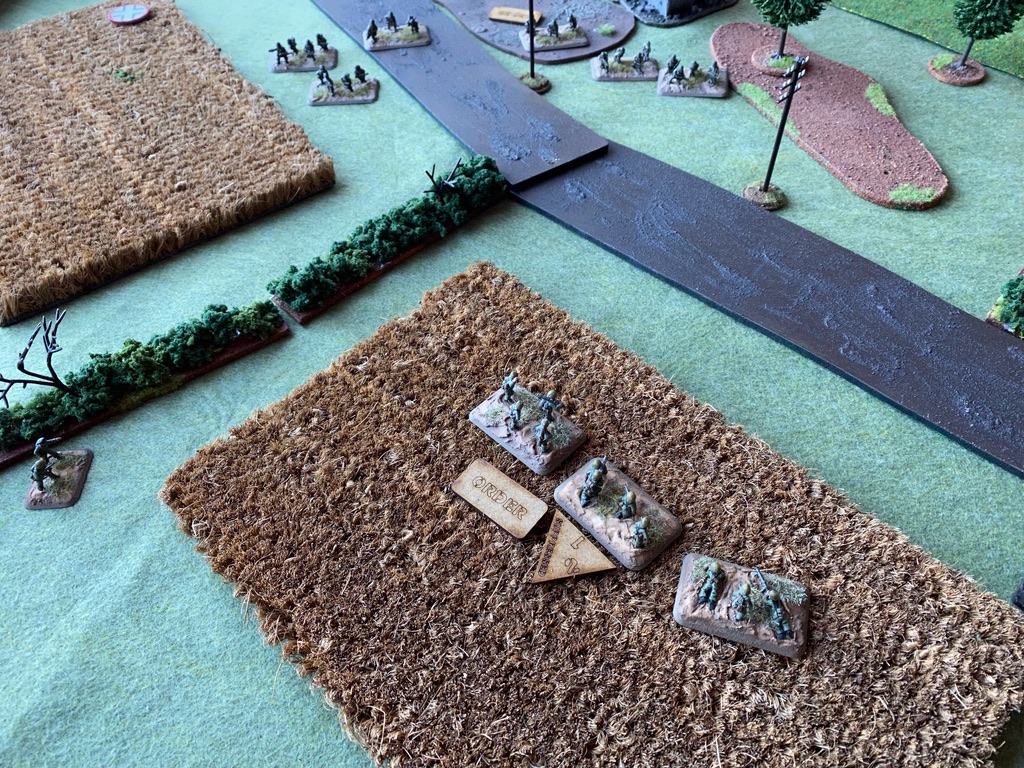







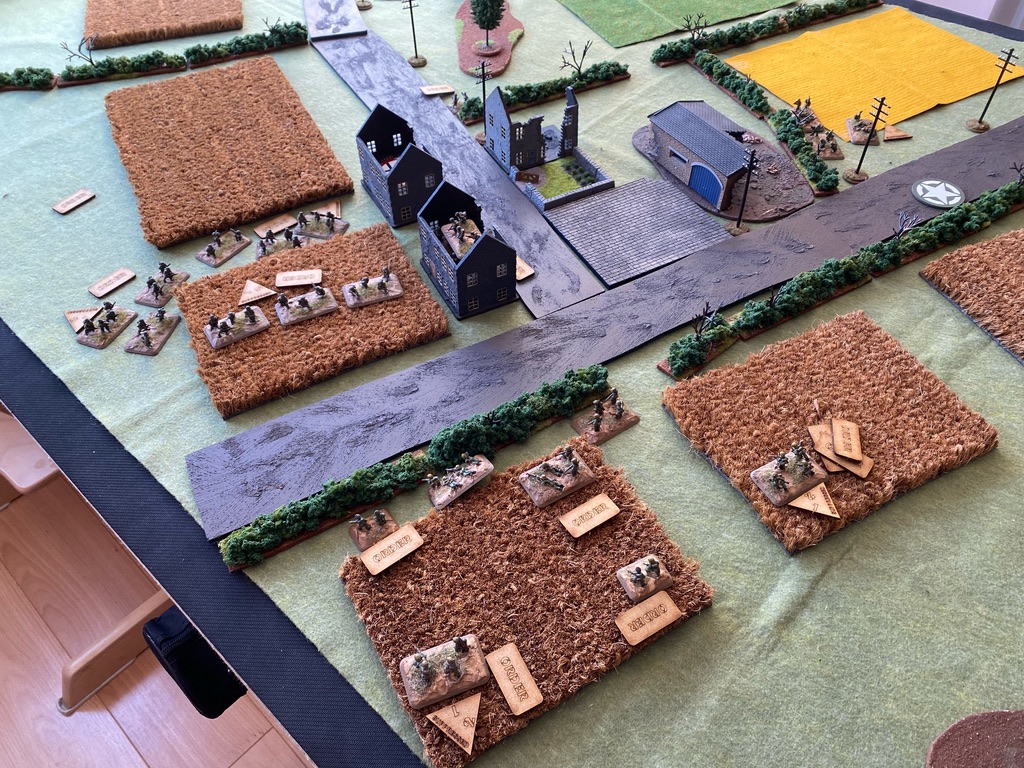
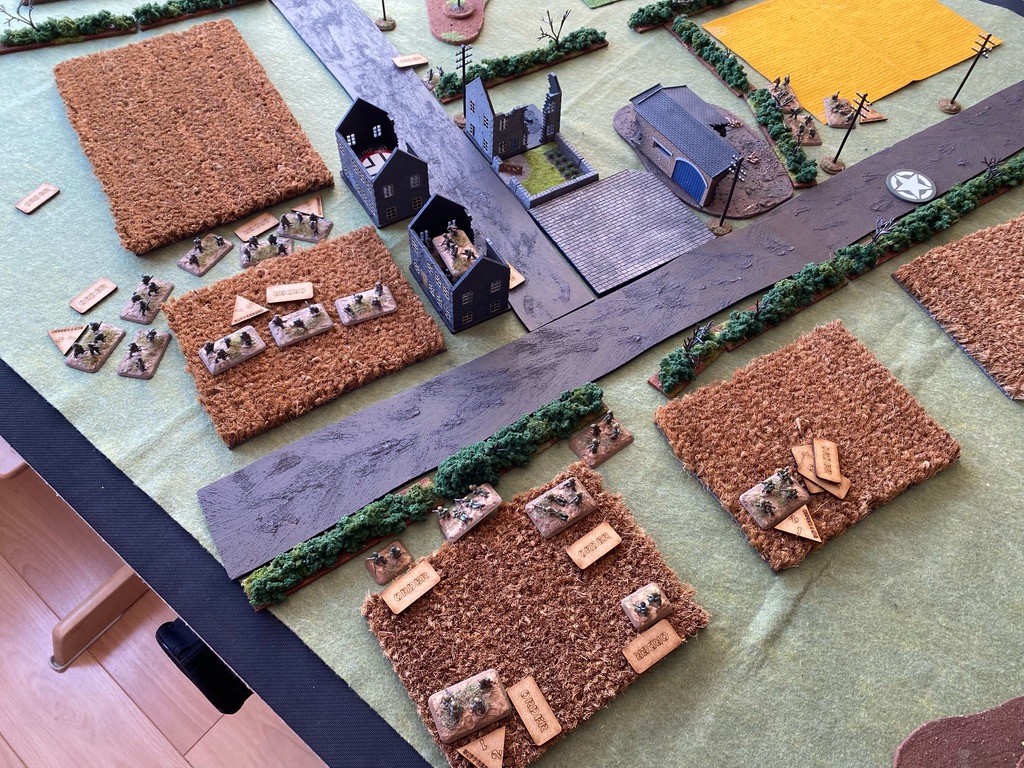
‘O’ Group is supplied with two double-sided QRS. This might seem a little daunting, but the game isn’t too complex. In fact, it plays quite fluidly. The platoon is generally the level at which orders are carried out. It is a game of command, more than combat, but the combat rules are sufficiently detailed to get a sense of how the platoon performs. The combat system merges morale and losses, with platoons gaining shock, then suppression and then section losses as they come under fire. Shock and suppression can be rallied off, but once lost, sections cannot be regained, i.e. they are casualties or have fled the battle.
The command side of things is divided between the Battalion HQ commands and commands at company commander level. The system requires no book keeping (apart from maybe noting where ambushes are set up) as all information is represented by the models and the tokens on the board. Orders are always limited and as a Battalion becomes more pressed much of them may be spent managing morale. Herein lies the key decision making element: in the thick of battle, how much effort should be expended managing morale versus trying to push forward to pressure the enemy. Battalion HQ orders can endure from turn to turn, but are a precious resource as they factor in determining initiative. They should be spent at the critical time. All quite schwerpunkty!
Like many wargames, ‘O’ Group can be played in a variety of ways. If you so choose, there is a basic point system allowing ‘balanced’ forces to be chosen. Objectives are more notional than in other games, and this is a good thing. Once a certain objective, e.g. take control of a set of farm buildings, is achieved, it might release a reserve company to move to the next phase of the battle. Victory in a scenario may be based on achieving such objectives, but that is very much down to the players to decide. Alternatively, the game has a FUBAR system, where losses (typically four sections) lead to a gradual erosion of command effectiveness. If one side hits three FUBARs they have to withdraw. Simple, but effective. The function of a company is important, as the company commander can exert control over his troops and the Battalions objectives will often be broken down to company level objectives. This can be impacted by the national doctrinal approaches, with some nation’s companies having fixed supports, e.g. AFVs associated with a company and its sector of the battlefield before the battle, while others are more flexible. These distinctions are nice and potentially gives some ‘flavour’ to playing different nations.
For my second game, I added AFVs and Battalion mortars, rereading the relevant rules …










Again, these elements played well. Being ‘zeroed-in’ by medium mortars was a suitably unpleasant experience and certainly motivated troops under it to get moving! AFVs were effective, but not game changing and (as I saw in a third game I played through) can be hunted down by infantry if left unprotected.
This post hasn’t been an attempt give an overview of how ‘O’ Group plays, but rather to give my impressions of it. So, what are they? Well, in short, I really like it. The game plays fluidly and ‘feels’ like I’m commanding a decent sized force. Command is a limited resource and has to be managed. Company commanders matter, allowing your units to be pushed hard to achieve more. The various different unit types function as you’d expect. The game has similar friction elements to Chain of Command, but the friction in the command side of things isn’t quite as variable. The fact that you have more units to command (at least nine infantry platoons in a full Battalion), means that there is significant opportunity for dynamic play; if one aspect of your force is stalling, you can potentially get another to reinforce them, or to enact your plan in another way.
My experience with ‘O’ Group is limited, but so far I like it. The PDF is £16 pounds and is definitely worth picking up. You will probably need the tokens, so it might be worth looking at a physical bundle (although it’s worth noting that the first edition of the book had a minor misprint with the page numbers and section identifiers being printed near the spine rather than on the outer edge of each page). At the moment getting the tokens outside of the UK may be an issue, as the Karwansaray deal seems to be for distributing books only. Anyway, I’m sure that’ll all be rectified soon.
If, like me, you have a load of Flames of War models sitting idle and you fancy trying a larger scaled ruleset, give ‘O’ Group a try… what’s the worst that could happen!
Until next time,
Owen
